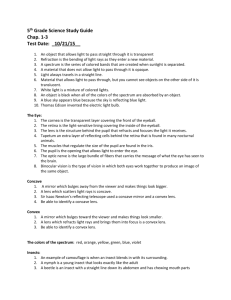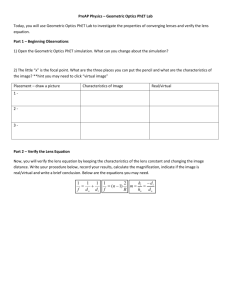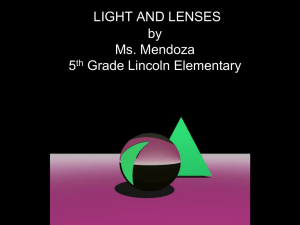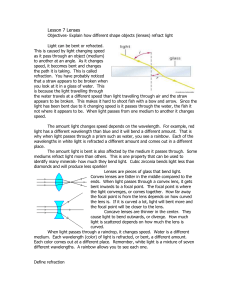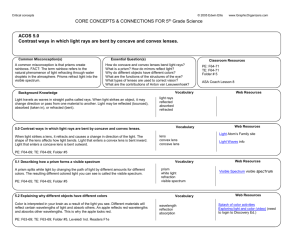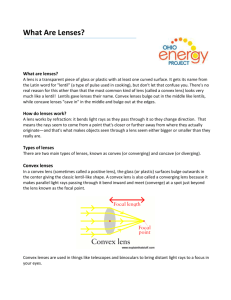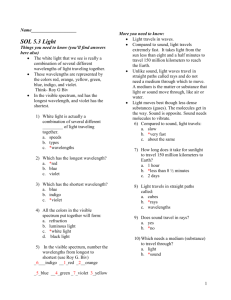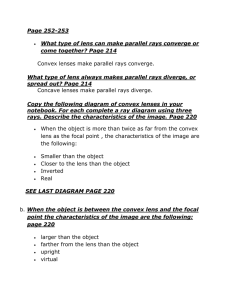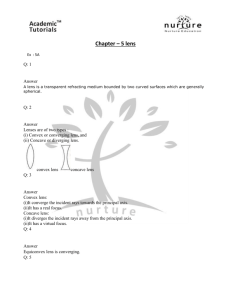Lenses Virtual Lab using PhET Geometric Optics
advertisement
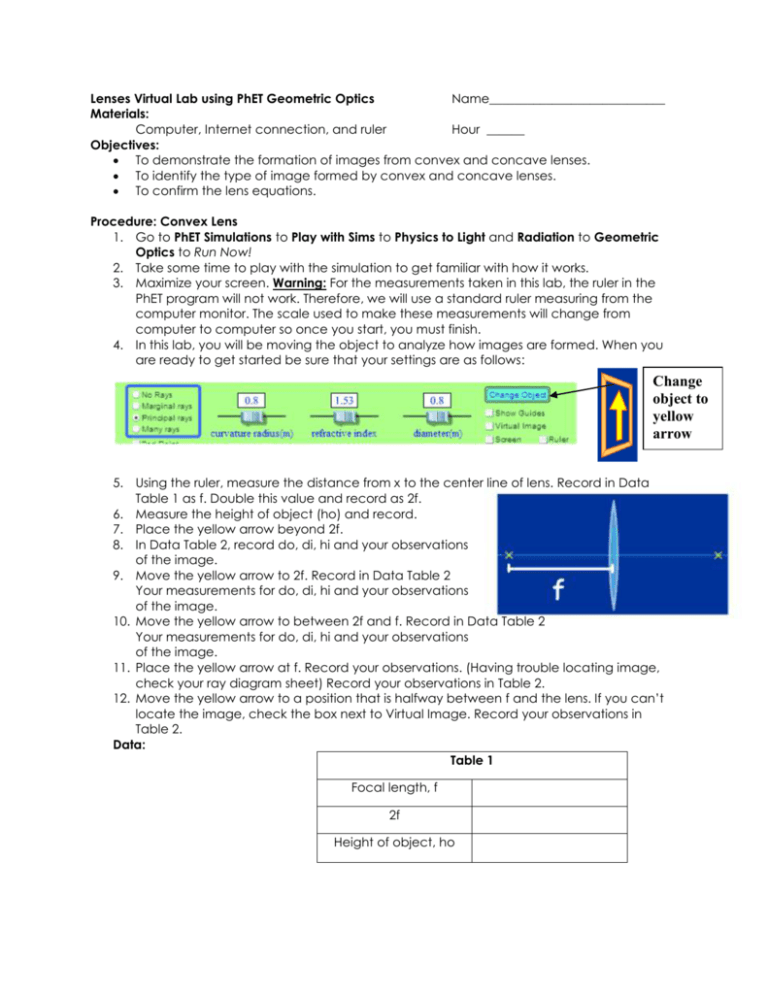
Lenses Virtual Lab using PhET Geometric Optics Name____________________________ Materials: Computer, Internet connection, and ruler Hour ______ Objectives: To demonstrate the formation of images from convex and concave lenses. To identify the type of image formed by convex and concave lenses. To confirm the lens equations. Procedure: Convex Lens 1. Go to PhET Simulations to Play with Sims to Physics to Light and Radiation to Geometric Optics to Run Now! 2. Take some time to play with the simulation to get familiar with how it works. 3. Maximize your screen. Warning: For the measurements taken in this lab, the ruler in the PhET program will not work. Therefore, we will use a standard ruler measuring from the computer monitor. The scale used to make these measurements will change from computer to computer so once you start, you must finish. 4. In this lab, you will be moving the object to analyze how images are formed. When you are ready to get started be sure that your settings are as follows: Change object to yellow arrow 5. Using the ruler, measure the distance from x to the center line of lens. Record in Data Table 1 as f. Double this value and record as 2f. 6. Measure the height of object (ho) and record. 7. Place the yellow arrow beyond 2f. 8. In Data Table 2, record do, di, hi and your observations of the image. 9. Move the yellow arrow to 2f. Record in Data Table 2 Your measurements for do, di, hi and your observations of the image. 10. Move the yellow arrow to between 2f and f. Record in Data Table 2 Your measurements for do, di, hi and your observations of the image. 11. Place the yellow arrow at f. Record your observations. (Having trouble locating image, check your ray diagram sheet) Record your observations in Table 2. 12. Move the yellow arrow to a position that is halfway between f and the lens. If you can’t locate the image, check the box next to Virtual Image. Record your observations in Table 2. Data: Table 1 Focal length, f 2f Height of object, ho Position of Object Beyond 2f (cm) Table 2 At 2f Between 2f (cm) and f (cm) At f (cm) Between f and lens (cm) do di hi Type of image: real, none, or virtual Direction of image: inverted or upright Concave Lens: 1. Go to the following web address: http://janggeng.com/convex-lens-and-concave-lens/ 2. Choose the concave lens. 3. Record f, do (s), di (s’), M and your observations of the image into Data Table 3. 4. Use the slider to change the focal length and record your new data into Table 3. Table 3 Trial 1 f (cm) do(cm) di(cm) M Type of image: real, none, or virtual Direction of image: inverted or upright Trial 2 Questions and Conclusions: 1. For each of the real images you observed, calculate the focal length of the convex lens, using the lens/mirror equation. Do your values agree with each other? 2. Average the values for f found in question 6 and calculate the percent error between this average and the value for f from Data Table 1. 3. When does a convex lens act like a magnifying glass? 4. Describe the conditions for forming a virtual image with lenses. 5. How does the image of a concave lens always appear? Where is it located with respect the lens and the object? 6. Research the two basic types of vision problems, farsightedness and nearsightedness, and describe the lens prescription for each. Use diagrams of the eye to show the light paths before and after remediation.
